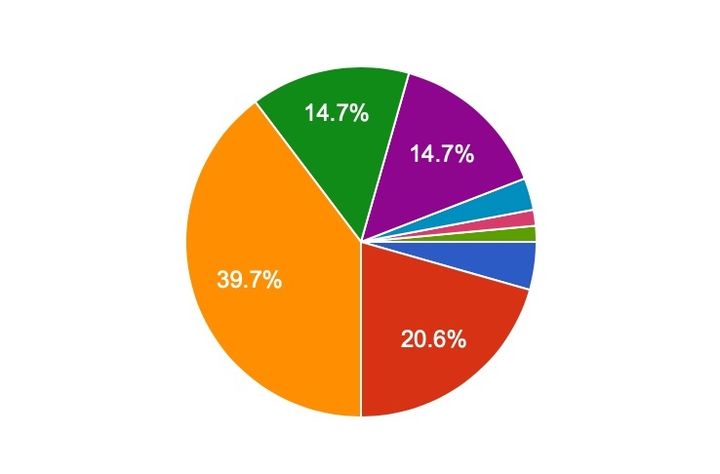
We’ve completed an analysis of our 2020 Fabbaloo Reader Survey and here’s what we found.
Each year we ask readers to participate in a quick survey so that we can find out more about you. This allows us to better understand who we’re speaking to, and hopefully creates opportunities for improvement. Again, this survey is all about you.
Diversity Increasing
The diversity of our readership continues to increase. This year we found the percentage of female readers increased significantly, and it’s now over 17%. That’s incredible news, and perhaps has something to do with the work done by Women in 3D Printing.
Our readers’ ages continues to be dramatic mix of every category. Although we seem to have few readers under the age of 18, the remaining categories are all split mostly evenly. However, in 2020 we saw a slight decline in readers aged 60+.
Experience in 3D Printing
Fabbaloo’s readership is an intense group that is very serious about 3D printing. Incredibly, almost half of our readers have in excess of five years experience in the field, and 81% have at least two years of experience with 3D printing technologies.
Approximately 64% of readers own a 3D printer, unchanged for the past year. However, the percentage of readers using 3D print services rose from 6% to 17% in 2020. This is significant and perhaps due to the combination of increased interest in high-performance engineering materials and many competent industrial services to choose from.
Very strangely, the percentage of readers who “Don’t 3D Print” rose to 9%. I’m not sure what to make of this, other than perhaps it represents people who work for additive companies but just don’t happen to be involved in direct operations.
The experience level in 3D printing of Fabbaloo readers is quite high. Over 80% have more than two years of experience with the technology, with 47% having more than five years experience.
I’m happy to report that 17% of respondents have been reading us for more than five years. We’ve been here since 2007, so perhaps there are some who have been with us for over a decade. Some 65% of you read us daily, and we thank you all!
The breakdown of our reader types is more-or-less consistent with previous years. We have about 25% self-described as “DIY” 3D printer users, with around 60% being “professional” users.
Belt 3D Printers
This year we asked some questions about belt 3D printers. This is a new form of 3D printing that holds much promise, although it’s still in the early stages. With this technology 3D printer operators will be able to produce large objects on relatively small and inexpensive equipment, or alternatively become a mini-factory able to produce larger quantities of prints without much labor. You can read our stories on belt 3D printing here.
Around 25% believe belt 3D printers will remain a niche or not really take off in the market. However, 54% say belt 3D printers will become a very useful style of 3D printing, with 15% believing it could become a standard approach for the technology.
Near 35% say they will consider buying a belt 3D printer in the near future, and 7% will “definitely buy” a belt 3D printer.
Based on these responses, it seems pretty clear to me that belt 3D printing does indeed have a promising future. It’s likely that we will see a number of 3D printer manufacturers consider introducing this style of 3D printer to their product lines.
3D Printing Materials in 2020
As always, we ask responders to indicate which 3D print materials they intend to use more of in 2021. The results were extremely interesting.
Among the different material options listed, some rose significantly from 2019 results, while others fell precipitously.
The top ten materials reported were:
- Carbon fiber-infused filament
- PETG filament
- Metal-infused filament
- Flexible filament
- PLA filament
- High-temperature resin
- PEEK filament
- High-strength resin
- Titanium powder
- PC filament
This is quite interesting, as PLA seems to be falling off. While more 3D printing might be taking place, it’s not going to be using nearly as much PLA material.
It’s also quite interesting to see that carbon fiber filament takes the top spot, and quite strongly. This is a relatively easy material to 3D print, but produces incredibly strong parts, so it’s not surprising more people have discovered its benefits.
As I suspected, more people will be using PETG over PLA and ABS, as it’s easier to 3D print than ABS and offers some engineering property advantages over PLA.
What’s most interesting is the change from 2019. Here are the “winners”, materials having greatly increased interest:
- Carbon fiber-infused filament
- Titanium powder
- High-temperature resin
- PEEK filament
- PC filament
- ULTEM filament
- Foodsafe filament
- Metal-infused filament
- Aluminum powder
- Glass-infused filament
Which materials were the “losers”? Unsurprisingly, they were PLA, dropping almost 16%, and ABS, dropping off 7%.
Everything else had no change or modest increases.
I think these material results confirm the ongoing shift to professional applications, where stronger engineering materials are required.
What I don’t understand is the interest in food-safe filament. What are people 3D printing that requires food-safe filament?
